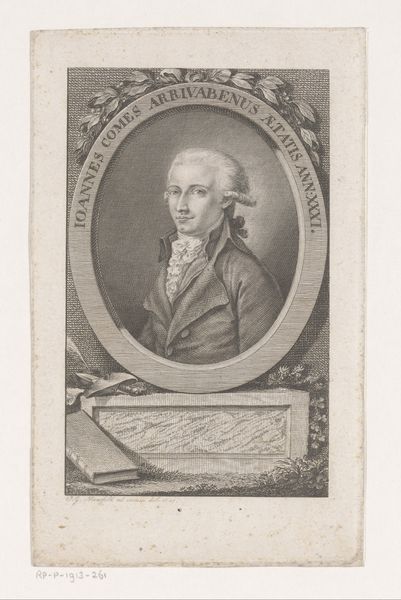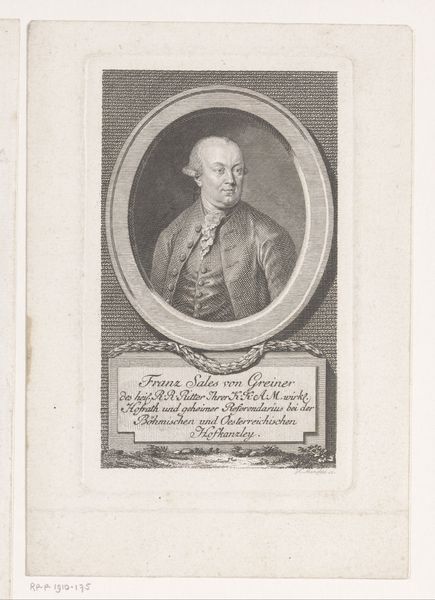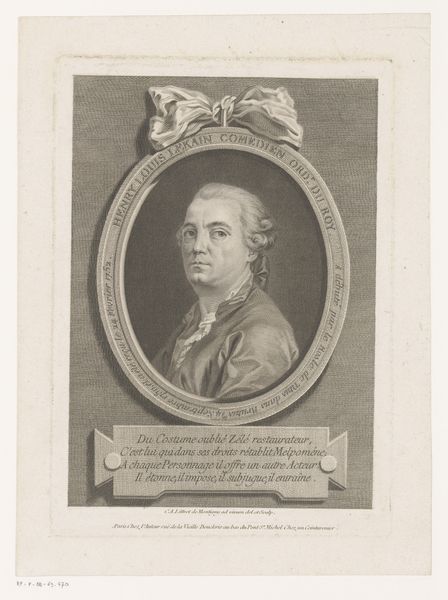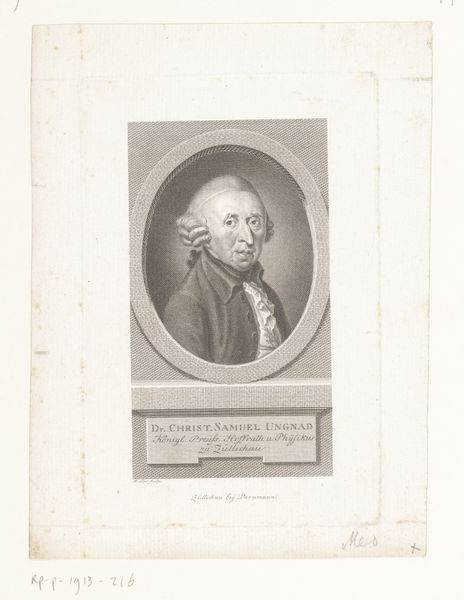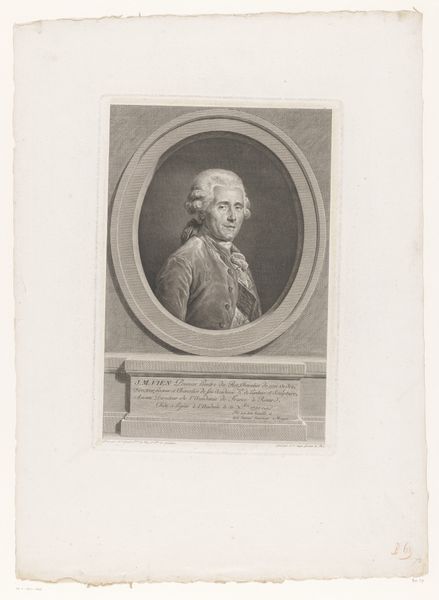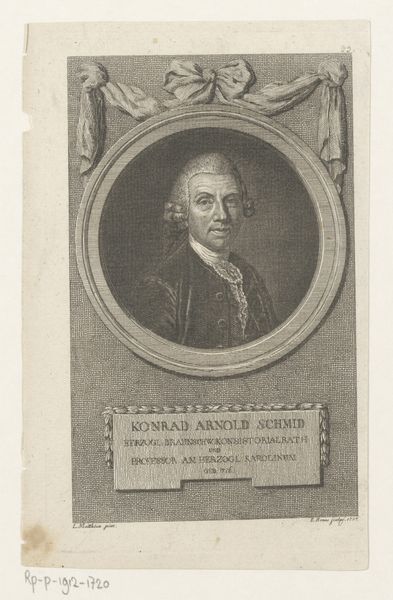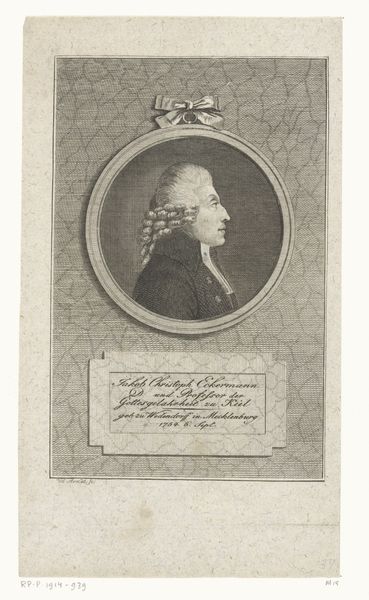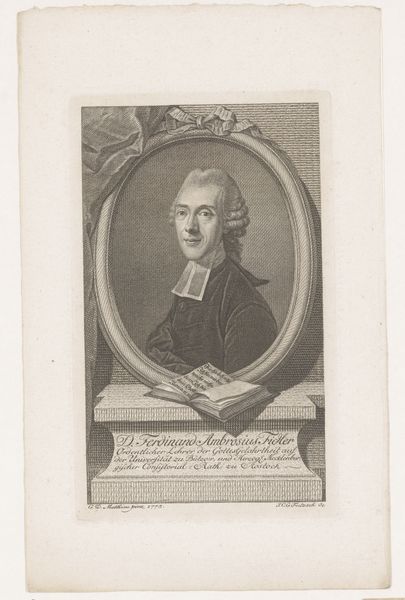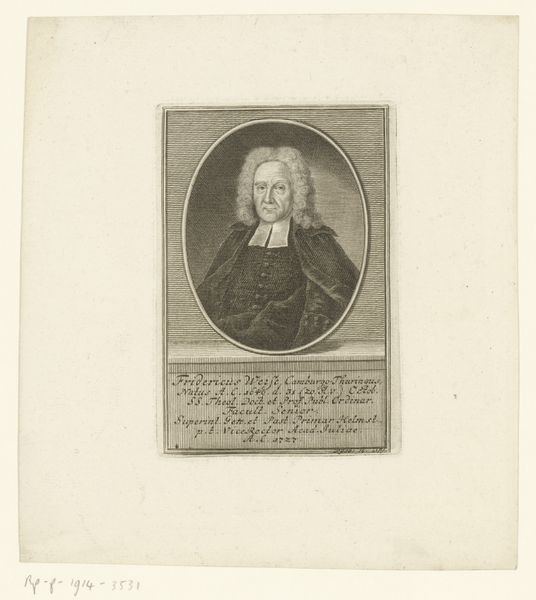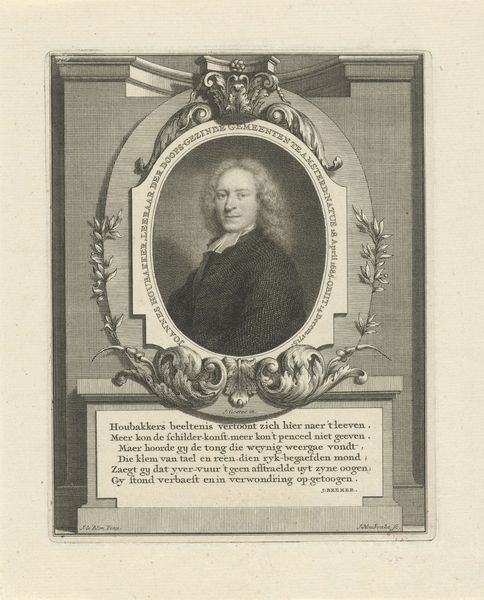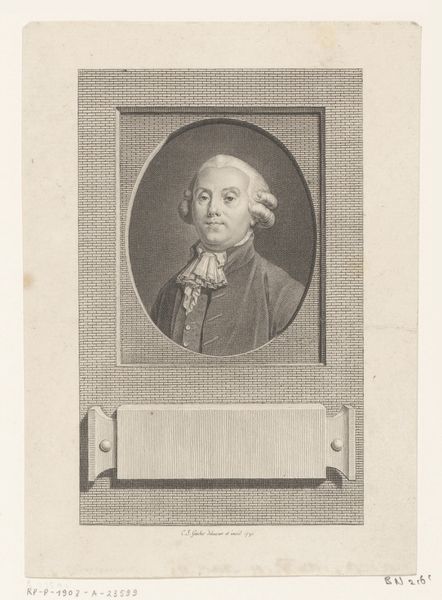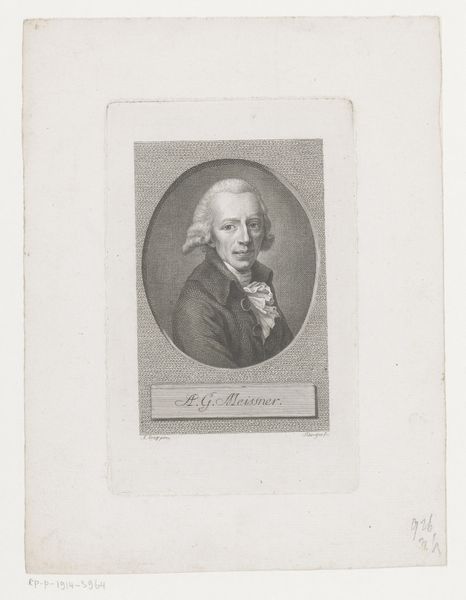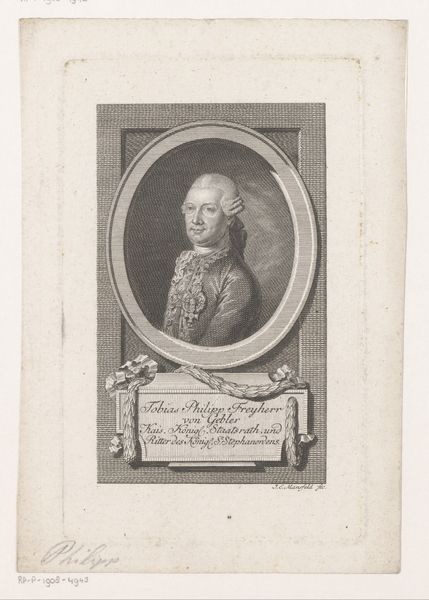
print, engraving
#
portrait
#
neoclacissism
# print
#
engraving
Dimensions: height 175 mm, width 118 mm
Copyright: Rijks Museum: Open Domain
Editor: We're looking at a print titled "Portret van Joachim von Schwarzkopf," made sometime between 1780 and 1813. It's an engraving displayed here at the Rijksmuseum. There's something so formal about the portrait style. What do you see in this piece beyond just the subject matter? Curator: It's fascinating to consider this print within the socio-political context of the late 18th century. Engravings like these served a crucial function, circulating images of prominent individuals within a society that had limited access to visual representation. Consider this a pre-photography form of political and social branding. It's carefully staged imagery, playing a role in shaping public perception. Editor: So, it's not just about commemorating an individual? Curator: Precisely. Think about who this portrait was intended for, and who commissioned it. Was it for personal memory or wide distribution? The meticulous detail in the engraving, even the backdrop, aimed to convey not just likeness but also status and character within very controlled visual vocabularies. Who held the power to reproduce and circulate such imagery and what purpose did it serve? Editor: It makes you think about who gets to be remembered and how. It definitely changes how I view it. Curator: Indeed. This portrait wasn't just documenting Joachim; it was participating in a broader discourse about power and social identity. This piece then, like any artwork, is enmeshed with the cultural forces that produced and consumed it. Editor: Thank you, I think this provided new tools to interpret artworks in terms of influence and circulation. Curator: A worthwhile contemplation. Keep questioning what’s framed, both within the artwork and beyond it.
Comments
No comments
Be the first to comment and join the conversation on the ultimate creative platform.
